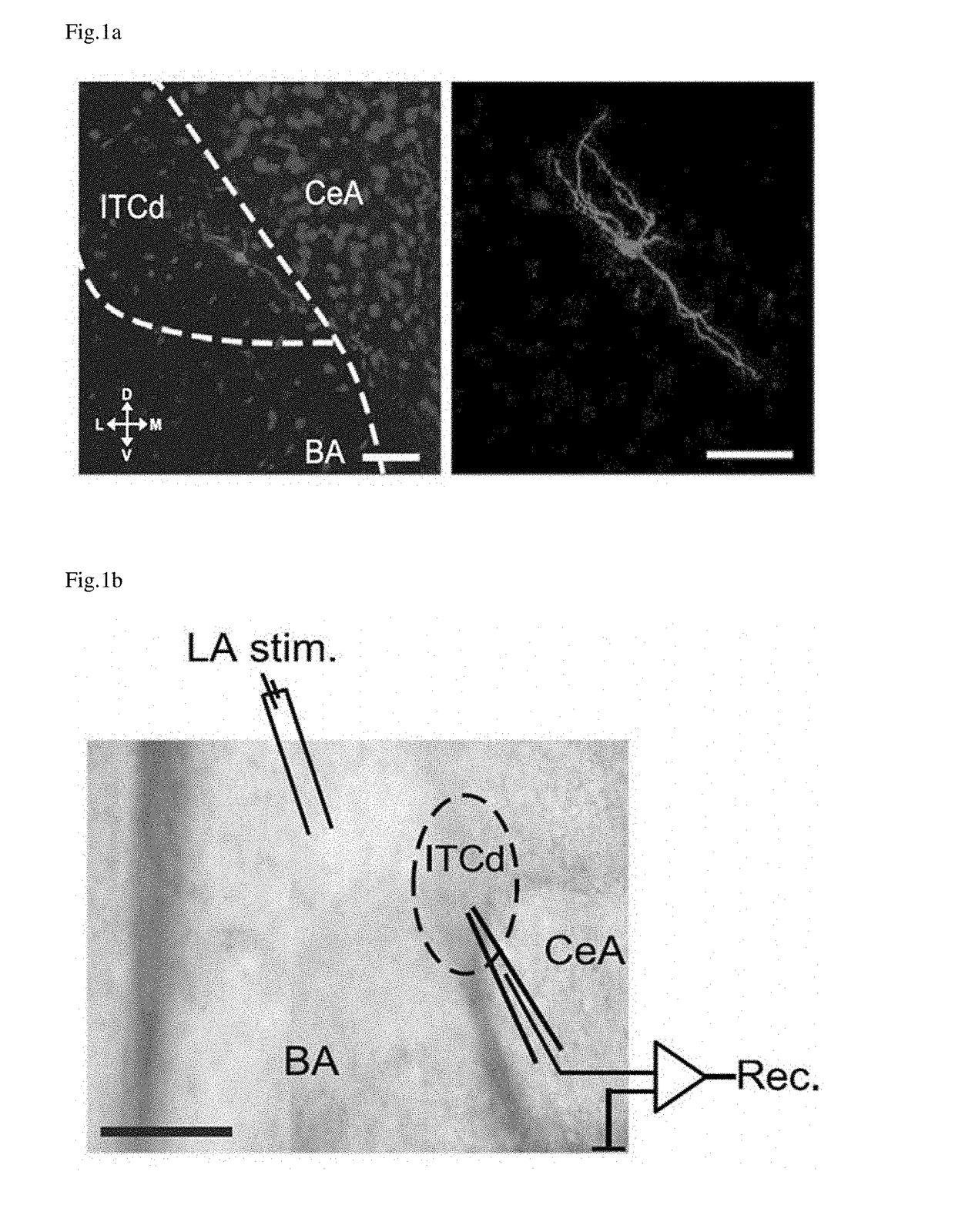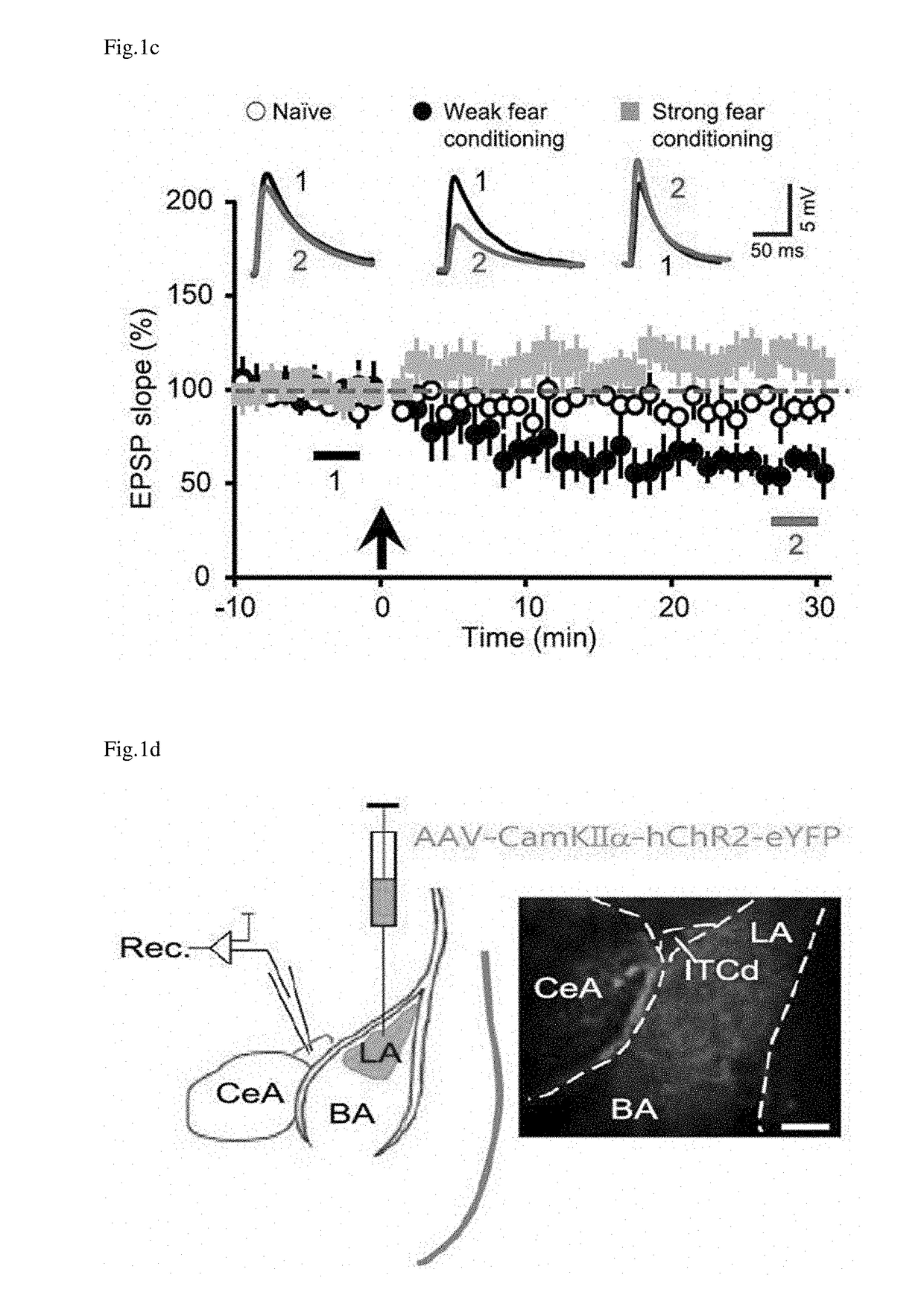Pharmaceutical composition for treating posttraumatic stress disorder
a technology for posttraumatic stress disorder and pharmaceutical composition, applied in the field of pharmaceutical composition for treating posttraumatic stress disorder, can solve the problems of unclear whether synaptic plasticity can modulate fear acquisition and expression, interfere with the extinction of fear memory, and achieve the effect of limiting expression and reducing ptsd symptoms
- Summary
- Abstract
- Description
- Claims
- Application Information
AI Technical Summary
Benefits of technology
Problems solved by technology
Method used
Image
Examples
example 1
& Methods
[0115]1-1. Animals
[0116]Male C57BL / 6J, D4R-KO, and Dlx5 / 6-Cre and Ail4 reporter mice from Jackson Laboratory (Bar Harbor, Me.) were housed under a 12-hour light / dark cycle and given ad libitum access to food and water. All procedures for animal experiments were approved by the ethical review committee of POSTECH (Pohang University of Science & Technology), Korea and performed in accordance with the relevant guidelines.
[0117]1-2. Plasmid and Viral Vectors
[0118]pCMV6-AC-D4R-turboGFP was purchased from OriGene Technologies (Rockville, Md.). shRNA sequences targeting D4R (gctgctcatcggcttggtgtt) were also obtained from OriGene Technologies and cloned into pLL3.7 construct. Then, the effectiveness of shD4R sequence was verified with quantitative RT-PCR using HEK-293 cells (GenTarget, San Diego, Calif.) co-transfected with pCMV6-AC-D4R-turboGFP and pLL3.7-shD4R. To achieve simultaneous Cre-dependent knock-down and eYFP expression in the same cells, pAAV-EF1α-DIO-eYFP, was modified...
example 2
[0154]2-1. LTD Induction in the Dorsal ITC Synapses after Weak Fear Conditioning
[0155]The dorsal ITC receives glutamatergic inputs from the LA and the medial prefrontal cortex (mPFC), which adjust fear responses. We have identified the dorsal ITC neurons spatially and morphologically (FIG. 1A).
[0156]To assess synaptic properties in the LA dorsal ITC pathway and other neuronal features, we obtained whole-cell patch recordings of excitatory postsynaptic potentials (EPSPs) while stimulating LA (FIG. 1B) and induced STDP by applying 80 pairs of presynaptic stimulations and postsynaptic action potentials with various time intervals from EPSP initiation.
[0157]Interestingly, long-term potentiation (LTP) arose at +4- and +6-ms interval delays in the presence of the GABAA receptor antagonist picrotoxin, but not in the absence of picrotoxin. These data suggest that GABAergic transmission tightly regulates STDP in the dorsal ITC neurons as in the BLA neurons.
[0158]To analyze the behavioral and...
PUM
| Property | Measurement | Unit |
|---|---|---|
| thickness | aaaaa | aaaaa |
| transparent | aaaaa | aaaaa |
| freezing time | aaaaa | aaaaa |
Abstract
Description
Claims
Application Information
 Login to View More
Login to View More - R&D
- Intellectual Property
- Life Sciences
- Materials
- Tech Scout
- Unparalleled Data Quality
- Higher Quality Content
- 60% Fewer Hallucinations
Browse by: Latest US Patents, China's latest patents, Technical Efficacy Thesaurus, Application Domain, Technology Topic, Popular Technical Reports.
© 2025 PatSnap. All rights reserved.Legal|Privacy policy|Modern Slavery Act Transparency Statement|Sitemap|About US| Contact US: help@patsnap.com



